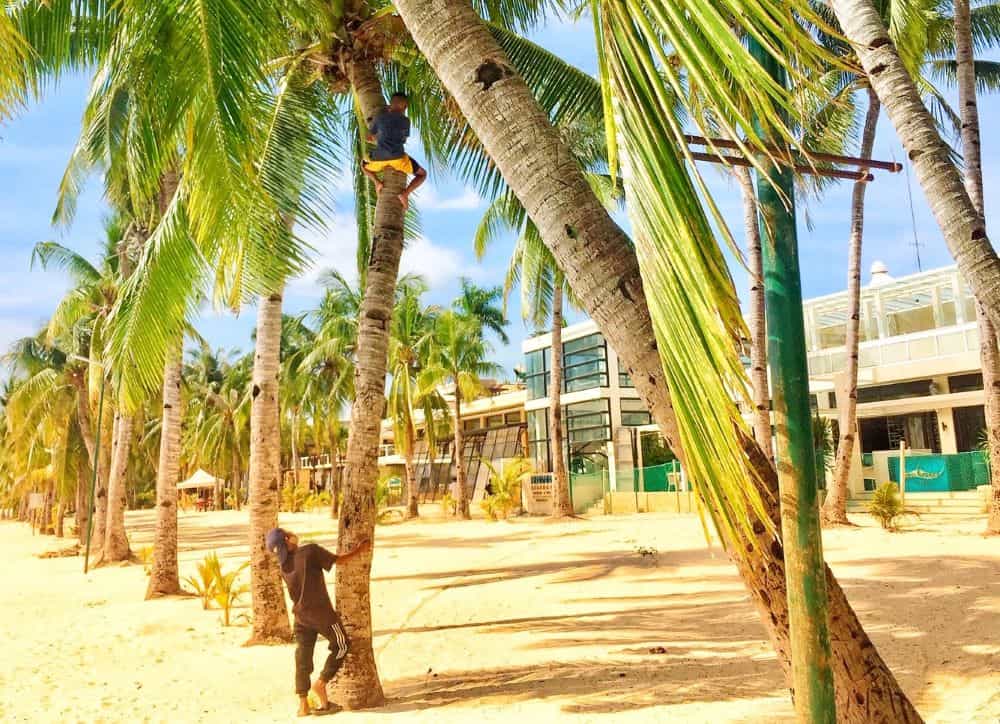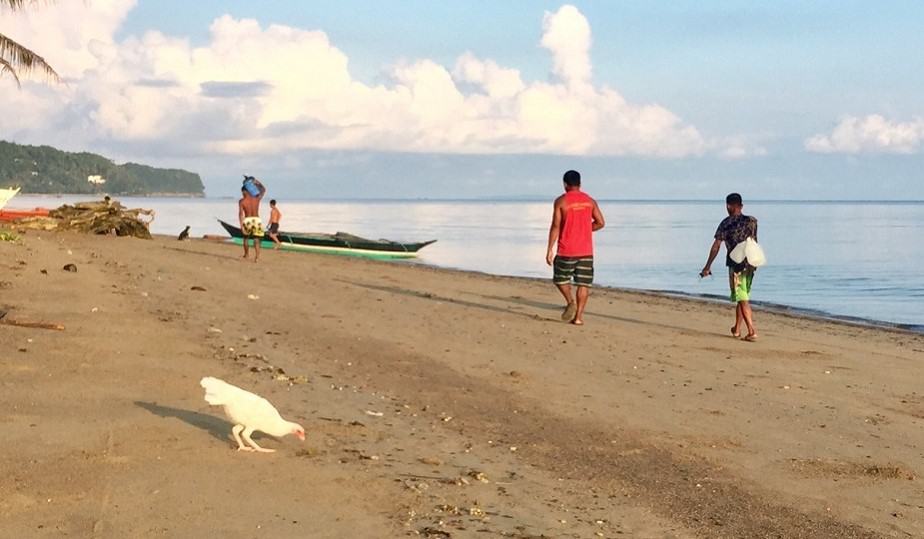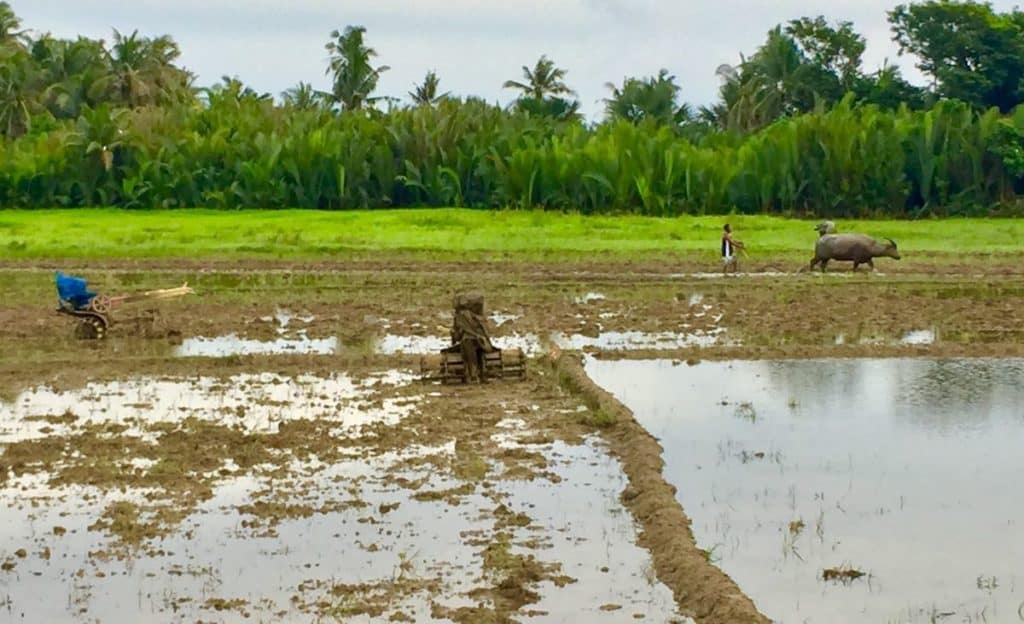Last Updated on June 7, 2023 by Ellen
As I write this, it’s Independence Day in America — and in the Philippines.
July 4, 1946, is the day the Philippines gained freedom from America’s colonial hold.
And while vaccinated Americans celebrate freedom from COVID (for the moment), it’s a totally different story on this side of the world.
Here’s a ‘real talk’ update on the situation over here.
Earth Vagabonds Real Talk Update
The biggest updates are about the virus and vaccinations. Because these impact everything in our lives. So let’s start there.
Virus & vaccinations
The virus is spreading. Our province is under what is called a ‘general community quarantine’ (GCQ).
This essentially means limited movement — essential travel only; no gatherings such as birthday parties; no contact sports; a curfew; a liquor ban.
On vaccinations, we remain at the bottom of the priority list as supplies trickle in.
The few fully vaccinated Filipinos in this country have extra freedoms to celebrate: on Independence Day, the government essentially declared they are free to roam the country as they please.
But something like less than 5 percent of Filipinos are fully vaccinated.
In this rural area of ‘mainland’ Malay Municipality in Aklan Province, they’re still vaccinating elderly. Then it will be people with other illnesses and people who work with the public. Then it will go by age group.
- The Philippine Star: Palace appeals for patience on vaccines
- The Manila Standard: Low vax supply hounds rollout
There are 110 million people in the Philippines. This country is nowhere near herd immunity with only roughly 2.5 – 2.7 million people fully vaccinated as of this writing.
Most of the available jabs are from China. That won’t do us any good once we resume travel, as some countries don’t accept Chinese vaccinations.
So we continue to wait, as the virus spreads.
Delta variant
There are officially 17 confirmed cases of the Delta variant. Fifteen recovered, one person is still hospitalized at the moment, and one person has died.
All cases were Filipinos returning from abroad, and all cases were discovered on mandatory quarantine on arrival.
But here’s the rub: the Philippines can now only process 750 genome samples – per week.
To give perspective, at the moment there are 53,000 confirmed active cases. Each day, new cases number around 6,000. The Philippines has had 1.4 million recorded cases in the pandemic so far.
Genome sequencing
- Country: Philippines
- Genomes sequenced: 4,305
- Reported cases of COVID-19: 1,359,015
- Genome sequencing rate: 0.317%
Source: Quantam Magazine: A lack of COVID-19 genomes could prolong the pandemic
Health department officials have five machines for genome sequencing, and they say they hope to get them all up and running in different regions of the country … soon.
Vacations
Tourism used to be the economic driver of this region, and the pandemic decimated it. Ironically, Boracay had the highest number of domestic tourists in the pandemic in June 2021, but it’s really only a drop in the ocean when compared to pre-pandemic arrivals.
Despite rising COVID cases, the government had to open Boracay. There were more suicides than COVID deaths due to lack of income.
That’s how desperate people are. I’ve literally seen skinny, hungry children climbing trees for coconuts.

The requirement for vacationers to enter Boracay is a negative COVID-19 test within 72 hours of their arrival. This creates a three-day window of opportunity for infection, of course. No one is quarantined unless they show obvious symptoms.
Time will tell if this might lead to another shut down in the future.
By the way, foreign leisure tourists are not yet allowed into the country, but foreigners married to Filipinos are allowed – with quarantines and negative tests.
Nearly the last place you want to be
The Philippines is in the next-to-last spot in a COVID-19 resilience ranking by Bloomberg. (The United States is #1.)
The ranking orders the world’s 53 largest economies by factors including:
- vaccinations
- lockdown severity
- flight capacity
- one-month fatality rate
- gross domestic product
- community mobility
- health care
- human development index (education access)
- reopening progress
Meanwhile, Moody’s Analytics slashed its growth forecast for the country this year, as the Philippine economy shrank for the fifth consecutive quarter, with its GDP at -4.2%. (The GDP was -9.6% in 2020.)
The Department of Health Secretary is reportedly “pissed” at the low ranking. In fact, the DOH declared the Philippines “low risk” for COVID-19, while local doctors in this province say the healthcare system is on the verge of collapse.
Talk about mixed messages.
And lost in the mess – the kids. World Bank says Philippine students are getting left behind.
A staggering 80 percent of students “don’t know what they should know” according to its new report.
Talk about heart breaking.
“The Philippines remains among the worst places to be in the COVID-19 era.”
Paco Pangalangan (Philstar.com)
As one opinion writer put it, “the Philippines remains among the worst places to be in the COVID-19 era.”
That opinion writer offers suggestions on how to pull the country up in the ranking for recovery and resiliency.
I offer no opinion. I’m just a visitor here.
Earth Vagabonds real talk update
I give you this overview because I feel it’s important to show you the pandemic is leaving countries behind.
It’s the same old story: the haves versus the have nots. Something I’ve written about for years.
Our lives are blessed beyond measure. We do not work in rice fields with hand tools and carabao (pictured at the top of this page); we don’t have to haul water back to our nipa hut; we don’t have unpaid electric bills; we don’t have hungry kids who cannot get a satisfactory education because they don’t have a reliable internet connection.
I try to make the best of it.
I try not to get upset about the starving dogs, the hungry kids, the stressed out parents, the water outages, the blackouts and brown outs, the painfully slow internet, the heat, the rain, the mosquitoes that eat me alive, the ants that bite my feet every time I’m outside, washing all of our laundry by hand for … well, it feels like forever.

Theo’s second “home”
The spouse recently called mainland Malay our second ‘home’. Theo wrote how he feels connected to the area and its people now that we’ve been here an astounding (nearly) 16 months (and in the Philippines 19 months).
Unlike Theo, who remained in the same house in the same city for nearly 30 years, I’ve moved around my entire life. I look at my living situation through the eyes of a true Earth Vagabond: I have no settled home.
Vagabond: (n) A person who wanders from place to place without a home or job. (adj) Having no settled home.
I’ve never owned a home, and I never rented the same place for more than a couple of years. I have always felt a need to move.
So in my temporary home, I feel comfortable and welcome, and I have friends here, too.
In fact, with the way things are in the Philippines these days, as I’ve just showed you, our help is needed more now then when we first arrived.
Ways we help
We’ve published many, many posts about helping the indigenous Ati tribe. And we are committed to a few more projects to help our Ati friends.
Accomplishments so far are nothing short of miraculous!
Think of it: electricity and running water brought to people who never had it — in the years 2020 and 2021. Most of our western family and friends and readers simply cannot imagine life without those taken-for-granted luxuries.

But as the pandemic drags on in this developing country, there are more out-of-work Filipinos (not Ati) who have their water and electric services shut off for non-payment, who are facing hunger, who don’t have much (if any) internet access – which can mean no online schooling for kids in this area.
My fellow sober expat friends have lived in the Philippines for many years. They always tell me: ‘You’ll never fix the problems.”
That may be true, but at least we can try to ease the suffering. That seems like a great goal for my remaining time at this temporary home.


Happy Independence Day, on both fronts. .